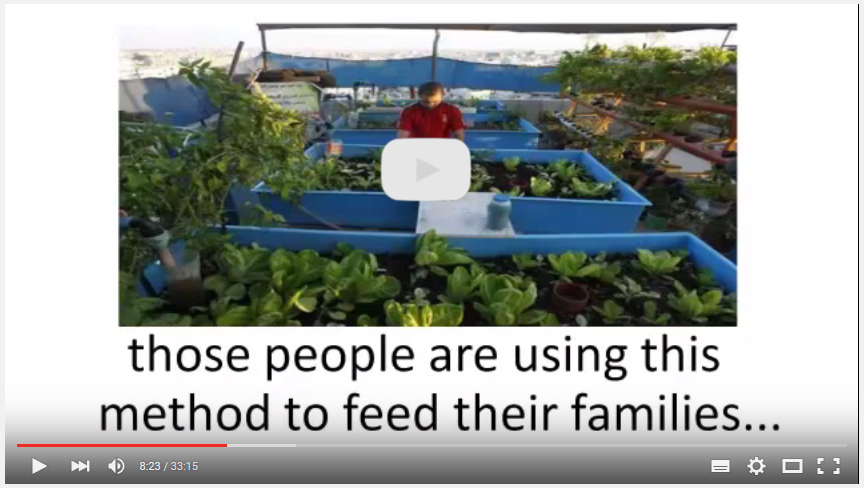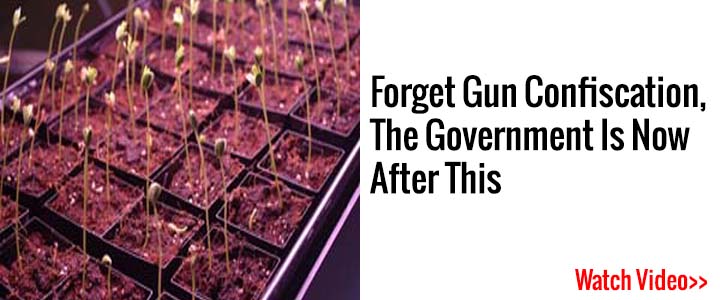An alternative to growing vegetables, herbs and fruit in a traditional garden, and an especially good option for those that don’t have the land required for a full backyard garden bed, is to start a container garden. While you’re probably not going to be completely self-sufficient with this style of garden, it can be a great way to move towards a more self-reliant lifestyle and can definitely help supplement and increase your emergency food supply.

Container Gardening Advantages:
- Food can be grown in areas where traditional gardens are not possible including areas with bad soil, apartment balconies, rooftops, patios, and urban environments.
- They are a great solution for renters who are unable to grow food in their yard.
- They are great for people just getting into gardening.
- They give you greater flexibility and the ability to bring plants inside during extreme weather that might affect their growth.
RELATED READING: Rooftop Gardens – Urban Farming
Choosing a Container for Growing Fruit, Vegetables & Herbs
While you could spend money buying a bunch of fancy containers, the truth is, pretty much anything that holds soil and has drainage holes can be converted into a container for your survival garden.

Things to keep in mind:
- Pot size will depend on the plant being grown, but keep in mind that adequate pot size is critical to successfully growing a healthy garden. Check with your local garden center or seed store for pot size recommendations.
- The containers need to provide adequate space for the plants roots. When growing vegetables, I always error on the side of picking a larger pot than I might actually need. The larger the container, the more room for error you will have.
- Drainage is a very important consideration. While all gardens need an adequate supply of water, too much water can adversely affect what you’re growing. Plants will not grow in a container that is water logged; make sure your containers have enough drainage holes, and make sure you have a way of catching the water that drains from those holes if your plants are indoors.
- Will the material rot over time? Stay away from materials that can be affected by water. Untreated woods or anything that is susceptible to mold should not be used.
It doesn’t have to cost you an Arm and a Leg!
Believe it or not those cheap $1 Reusable Grocery Bags from your local grocery store make great containers. Things like Tomatoes, herbs, lettuce and flowers can all be successfully grown inside these cheap bags. Look for the bags that have a smooth plastic exterior and a fabric interior; these bags will last an entire season, and are probably one of the cheapest ways to start experimenting with container gardening.
Soil Selection

Plain garden soil is not a good choice for container gardening as it’s usually too dense and will not provide a good growing environment in a pot. Because plants grown in a container are essentially trapped and unable to send their roots out in search of nutrition, you need to supply them with a growing medium that will help them thrive in in a limited amount of space.
When selecting a potting soil you should look for something that is fluffy, holds moisture, and provides the nutrition required by your specific plant. Ideally, that means selecting something that is about three-quarters soil-free mix and one-quarter compost.
Choosing the wrong soil could result in stunted plants or even worse, dead ones.
How to know you have the right soil:
- How well does it drain? One of the easiest ways to make sure you have the right type of potting soil is to check how quickly it drains. Most container soil should start draining within 5 – 10 seconds of water being placed in the pot.
- Quality Soil Contains Quality Materials. Look for ingredients like aged bark, earthworm castings, perlite and/or pumice, sphagnum peat moss, composted forest products and a wetting agent that will keep the soil moist.
- Pick a soil that is rich in organic matter. Keep in mind that your plants are constantly drawing nutrients from the soil.
- If you can, make your own. Making your own soil mixture helps ensure you know exactly what is going into your garden. The best homemade potting soils have three main ingredients: a growing medium (some type of homemade compost-based potting soil), a material to help retain moisture and nutrients (something like Spaghnum peat moss), and something that will help with drainage (Perlite, vermiculite, or sand).
Watering your Container Garden

Your potted garden is going to need plenty of water to successfully grow. Some things to consider when watering your plants include:
- How much you water your plants will depend on what you grow, so make sure to read any recommendations that came with your plants or seed packages.
- In general, once the top inch of potting soil is dry to the touch it’s time to water.
- It’s better to always have some moisture in the pot that to have wild fluctuations between wet and dry soil.
- Using mulch on top of the pot can help prevent evaporation from the top soil.
Sunlight & Temperature Control

When it comes to any type of garden, sunlight and temperature are important environmental considerations that will ultimately affect how successfully your garden grows.
The great things about container gardening is they are portable, allowing you to tightly control how much light they receive and when to move them into a controlled environment. As the seasons change, simply moving your containers can help you prevent problems that often plague in ground gardens. Things like frost and drought don’t really affect container gardens, because once you see bad weather coming you can bring your containers indoors.
How much sunlight does a container garden need?
All potted plants need adequate sunlight, but how much sunlight varies from plant to plant. For example vegetables like tomatoes, corn, and hot peppers all need somewhere around 6-8 hours of direct sunlight a day. Leafy vegetables like lettuce greens, spinach and chard will not tolerate that much time in the sun, and will require much less direct sunlight.
VIDEO: “If I want my family to survive, I need my own food reserve“
Another way to ensure success is to pick plants that are native to your area. Even though your plants are being grown in a container, native plants will still outperform non-native plants and will be much easier to care for. The best thing you can do is follow the instructions on the seed packets label, or the soil tag that came with your plant.
Many times these instructions can be a bit vague when it comes to sunlight and say something like full sun, partial sun or shade; here’s what it means:
Full Sun: These types of plants will require somewhere around six to eight hours of direct sunlight per day.
Partial Sun: This means the plant should be placed in an area that receives between four and six hours of sunlight a day, preferably in the in the morning and/or evening with shade through the middle of the day.
Shade: These types of plants like less than four hours of direct sunlight per day, and do better in morning and evening sun.
General Tips for Successful Container Gardens:
While exact growing instructions will vary depending on what you are growing in your garden, there are some general tips that you should keep in mind.
- Select herbs, fruits and vegetables that are suited for container gardening. Certain strains do better with this style of gardening and when buying seeds the packages will usually indicate whether or not the plant will do well under these conditions.
- You need sunlight. While many gardens can be successfully grown indoors, you need to choose areas that receive adequate sunlight. Most plants will require somewhere around 5-8 hours of sunlight every day.
- Your plants require attention. Moisture levels in the soil and the general well-being of your plants need to be checked on a regular basis.
Self-sufficiency and Preparedness solutions recommended for you:
BulletProof Home (A Prepper’s Guide in Safeguarding a Home )
Lightsoutusa (You will have communications in ANY TYPE of disaster.)
Food for Freedom (If I want my family to survive, I need my own food reserve)
Alive After the Fall (Build yourself the only unlimited water source you’ll ever need)
Blackout USA (EMP survival and preparedness guide)
The Lost Ways (The vital self-sufficiency lessons our great grand-fathers left us)
Survival MD (Knowledge to survive any medical crisis situation)
Survival System (Learn The 7 Secrets Every Family Must Know To Survive Any Disaster Or Crisis)
Survive After Collapse (Survival Secrets That Actually Help You)
Survive The End Days (Biggest Cover Up Of Our President)
Liberty Generator (How to gain complete energy independence)
Backyard Liberty (Obama’s hidden agenda: more than just your guns…)
The Patriot Privacy Kit (Secure your privacy in just 10 simple steps)


